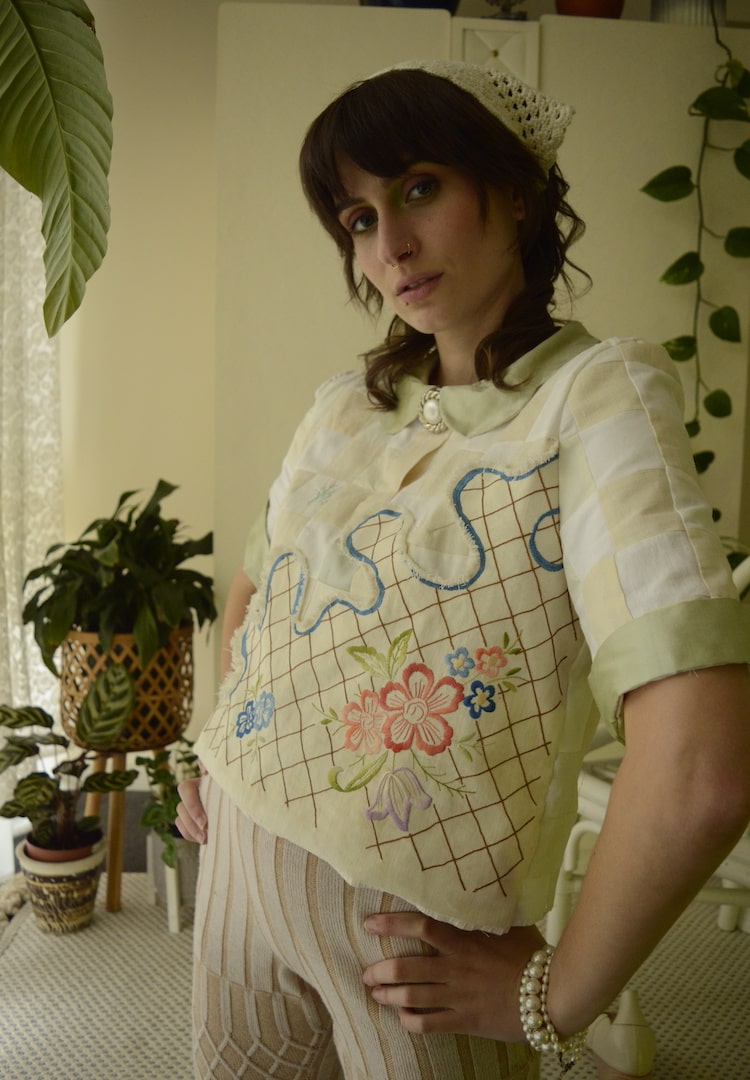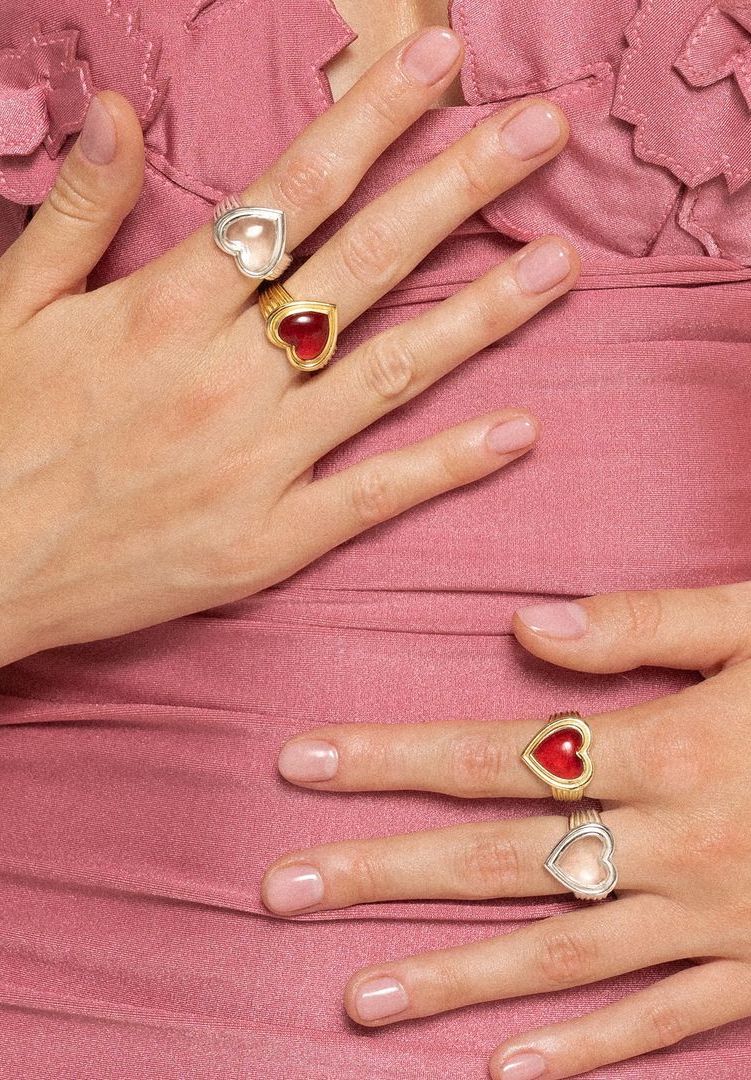How to identify greenwashing, according to Australian experts
IMAGE VIA @GOODBYES/INSTAGRAM
words by Bianca O’Neill
Ahead of their Melbourne Fashion Week panel, sustainability pioneers Courtney Holm, Eloise Bishop and Clare Press put brands’ claims under the microscope.
As green buzz words like ‘sustainable’ and ‘ethical’ have swept through fashion at an increasing pace, it’s hard for the average consumer to discern the difference between marketing spin and genuine intention.
Where do consumers start – and what do they prioritise? Should they focus on ethics in manufacturing? Or raw materials sustainability? Recycling and waste practices? Or vegan-friendly brands? The world of sustainability and ethics is so wide-ranging, it’s hard to imagine that one business could possibly solve all of these problems at once.
Discover up-and-coming local designers in our Fashion section.
That’s where greenwashing comes in: marketing claims that centre around sustainable ‘goals’ that sound great on the surface, but often don’t come to fruition – or don’t represent the business as a whole.
The use of greenwashing and sustainability-focused marketing allows questionable businesses to get away with less scrutiny for the real issues they create under the surface. People feel comfortable buying their clothing, without the brand having to do much at all, and its widespread prevalence has become increasingly confusing for consumers trying to sift the favourites from the fakers.
So we sat down with three local sustainability pioneers, ahead of their Melbourne Fashion Week conversation about greenwashing – Courtney Holm, founder of circular label A.BCH, Eloise Bishop, Head of Sustainability for Country Road Group and David Jones, and Clare Press, writer and founder of chart-topping podcast Wardrobe Crisis – to ask for their take on the trend, why it’s damaging, and how to spot it in the wild.
What exactly is ‘greenwashing’?
“Greenwashing refers to misleading or exaggerated marketing claims around eco-initiatives,” Clare Press explains. “Think, a fossil fuel company telling you they are ‘carbon neutral’ because they’ve offset their emissions from their offices or own operations, while conveniently forgetting to mention the growing emissions from their core business – burning the fuel that they export.
“In fashion, it might be around making a big fuss of a small sustainable collection, when the bulk of a brand’s output doesn’t consider sustainability at all.”
How can we identify the difference between greenwashing and genuinely sustainable practices?
“With more demand for sustainable products, marketers are rushing to describe their wares as ‘eco’, ‘green’, ‘natural’, which adds to the confusion,” says Clare. “Consumers can look out for evidence to back up claims – whether in the form of certifications, for example, or transparency around exactly how they make things to reduce their carbon, water and waste impacts.”
In other words, it’s not quite as simple as looking for a sustainability page on a website, and being satisfied with a 2030 sustainability target – it’s about seeing those goals in practice and knowing they’re certified by a third party.
“No one is holding them accountable to those claims or those targets,” Courtney Holm explains. “People can say whatever they want with targets – they’re not guaranteeing it. It’s very clever how it’s worded so that it’s not going to get them in hot water.
“There are red flags – sweeping statements about sustainability. Immediately I’m suspicious if I see the words ‘100 per cent anything’… The kind of grand statements are the statements I’d be worried about.”
Eloise Bishop recommends starting with independent organisations that report on the sustainability or ethics of various brands, like the Baptist World Aid Ethical Fashion Report or comparison apps like Good On You.
“One of the straightforward things that customers can do is look for products that have third-party certification that might relate to how products have been made – it could speak to the fibres, it could speak to the carbon impacts. But that third party verification is an independent stamp that’s outside of the business, to verify that that product has been made to a particularly high standard.”
GOTS is another popular standard referenced by many fashion insiders – it’s a global organic certification that ensures sustainable standards have been met in all aspects of a textile’s manufacture – as well as BCI, which provides support to farms to grow sustainably and ethically.
Why is greenwashing a problem?
Courtney tells me that the main issue with greenwashing lies in the fact that often polluting or unethical businesses hide behind the perception of sustainability, without actually changing the way they do business.
“The problem with these very minor initiatives, or very safe targets – or targets that never seem to be reported on – I think that the danger of that is yes, it is bringing more awareness on one side, but I think it’s a slippery slope.
“If we keep thinking these brands are doing really great things, we don’t ever scrutinise the greater impact of the business. There’s a real danger that they’re just going to keep doing what they’re doing for as long as possible – as long as they can get away with it – by having these surface-level commitments and initiatives that they participate in. I think it’s actually a hindrance overall.
“We have to be quite cynical, unfortunately – especially with big brands. With smaller businesses, independent labels, it’s a lot easier to get to know the founder and designer, and probably sewer, of the clothes that are made here. The impact of that sized business is really quite extraordinarily different from these big brands that are making these massive claims.”
As we’re chatting, Eloise points out that one of the key issues with greenwashing is the lack of governance. The simple fact is that any company can claim they’re sustainable, because there’s no clear-cut regulation around the use of the word.
“People are becoming more aware of the fragility of the planet, and our role in the community, so we are becoming more conscious of the way that we shop… I think it’s challenging for a customer to be able to distinguish between the companies that are doing genuine work in this space, and trying to become better, versus those that are capitalising on a shift in consumer sentiment.
“It’s difficult, in terms of the language, because there’s not a lot of regulation or standard that aligns to the words that we use to describe sustainable fashion… that is potentially a complexity to navigating all of this.”
What are some of the practical ways that smaller fashion businesses can ensure they’re not greenwashing?
“Small brands and business owners can just be very aware of the terminology they’re using – and not get swept away in the marketing,” says Courtney. “My whole approach has been to research the heck out of everything – and yes it takes time, and yes it makes things go slower. We’ve got a completely different business model because of it.
“Small businesses that have got smaller supply chains, they may have a smaller network to work with, which could be an advantage,” says Eloise. “When they’re specifying certain fibres or materials that might be organic or made out of recycled content, they really need to be asking their suppliers to back up the claim that they’re making on the fibre as well… [then] they’ve got that independent verification that’s come with the material that they can communicate through at the product level to the customer.”
How can we stamp out greenwashing?
“There’s always this question of who is responsible,” says Courtney. “Is it the big businesses’ responsibility to shift into greener practices? Is it the consumer’s responsibility? Is it the government’s responsibility to put legislation in? It’s really interesting – businesses really are not going to change unless there’s that consumer demand. That’s what they listen to.
“It’s a circular thing – there’s going to be a back and forth between parties. There does need to be some legislation involved as well, it’s not just on the individuals and the businesses. We have to ask the hard questions. All of this revolves around money – and none of these brands are committing to making less clothes… the issue that we have, above all else, is that we’re making far too many clothes, and those clothes are being churned out far too quickly.”
When it comes to the younger generation’s approach to fast fashion, Clare says she is “seeing twin tracks”. “Some Gen Z-ers are very conscious, and actively rejecting unsustainable companies and practices. Others are still buying cheap fast fashion to wear just a few times. It’s impossible to generalise; it really depends where you look.
“We certainly can’t say that fast fashion is on its way out. It has grown over the pandemic, with companies like Boohoo and Shein reporting record turnover and rising customer numbers.
“But anyway, I am not sure it’s helpful to focus so heavily on consumer behaviour – citizens become consumers when we trap them in a system that is defined by consumption. I know this is confronting, but I believe that we need to change the system, not people’s shopping habits.”
For more on greenwashing and sustainability, you can catch Courtney Holm, Eloise Bishop and Clare Press at Melbourne Fashion Week in conversation on Wednesday November 17. Tune in online at 11am for Beyond Greenwashing, presented by Creative Victoria.
Bianca O’Neill is Fashion Journal’s Senior Industry Columnist. Follow her at @bianca.oneill.










